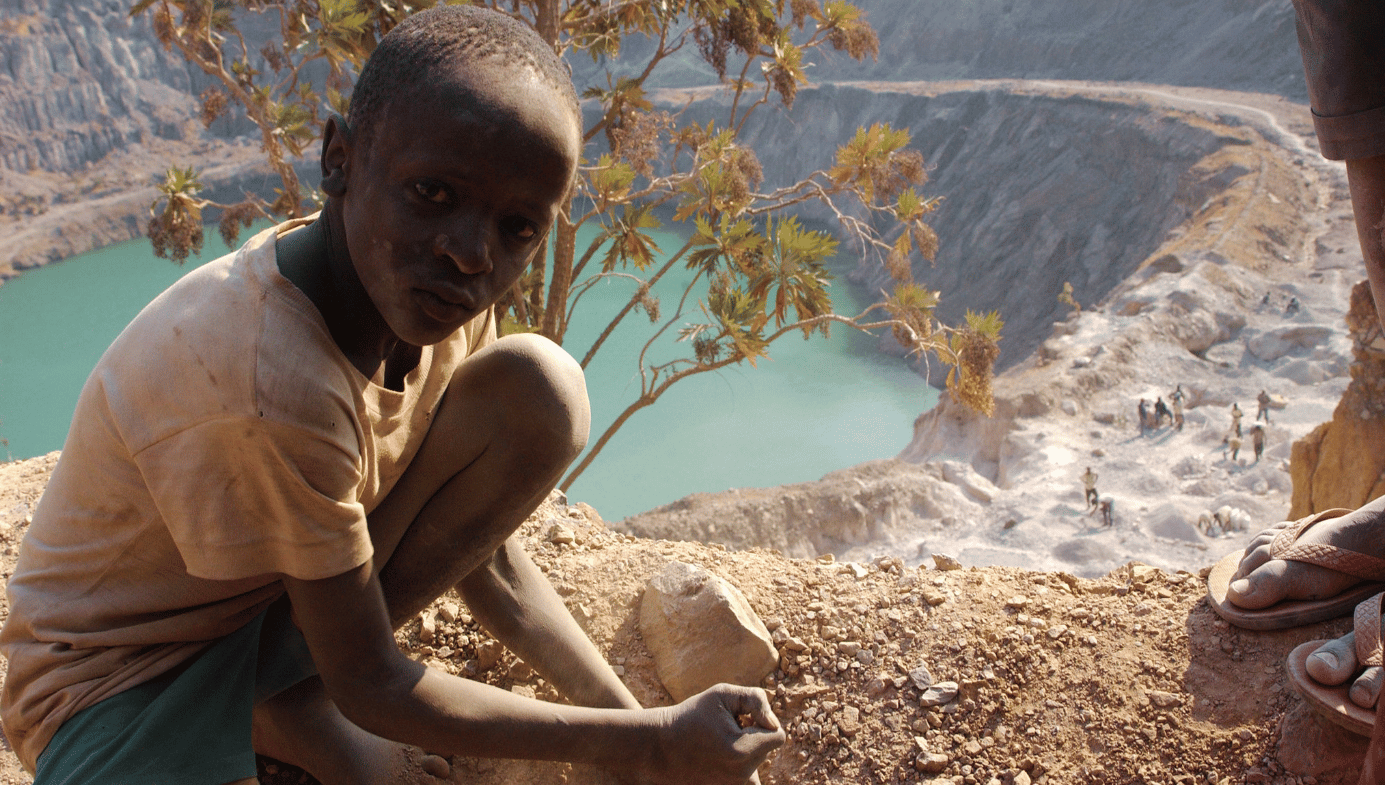Net Zero and the Law of Diminishing Returns
Civilisation has always been dependent on energy.

Human prosperity has been growing exponentially for more than two centuries. The quality of life of billions of people has significantly improved as a result of trade liberalisation and the opening up of international markets. The number of people living in extreme poverty—defined as subsisting on less than $1.90 per day—has fallen from 89 percent in 1820 to just under 10 percent today. Energy availability is clearly correlated with this rise in prosperity and most of that energy comes from fossil fuels. The fact that North America and Europe, the two wealthiest continents, also have the highest per-capita carbon emissions, should come as no surprise.
Since the 19th century, the West has attained previously unknown heights of material prosperity, enabled by the release of energy from hydrocarbons stored in trillions of tonnes of geologically compressed animal and plant matter. These deposits are ancient. More than two-thirds of the world’s oil, for example, began to form during the Mesozoic era, more than 250 million years ago. However, the supply of fossil fuels is finite and already growing scarce. The age of hydrocarbons is almost over. If we want to keep living in the era historian Deirdre McCloskey has referred to as “the great enrichment,” we must find alternative energy sources.
This does not mean that we should rush headlong towards the arbitrary goal of achieving net zero carbon emissions by a specific date. But we do need to ensure that we have enough energy to fuel continued technological progress, especially in places like Africa, where 600 million people still lack access to electricity and roughly half a billion live in extreme poverty.
The notion that Africa must adopt renewable energy sources has a faint whiff of colonial arrogance. Given that the United States currently consumes 19 million barrels of oil every day and that number is expected to reach 22 million by 2035, it is also blatantly hypocritical. If equality of opportunity means anything, it is imperative that Africa continue to use fossil fuels for as long as possible in order to catch up with the rest of the industrialised world.
Some people think there are still enough fossil fuels stored in the Earth’s subsurface to keep civilisation running for another century or more. But such calculations fail to account for the energy costs of extracting that fuel.
When prospectors from the Seneca Oil Company first struck black gold in Titusville, Pennsylvania in 1859, they extracted it by drilling wells to a depth of around 21 metres (61 feet) and each barrel of oil used to fuel the extraction process itself yielded approximately 100 barrels of oil, giving an energy return on investment (EROI) of 100.
That ratio is currently falling dramatically. Once the crude oil close to the surface of the Earth had been exhausted, companies had to dig deeper. By 1959, oil wells reached an average depth of 1,500 meters (5,000 feet). Today, it is not that uncommon to drill 5,000 meters (16,400 feet) and in extreme cases, oil is being excavated at a depth of 11,000 metres (36,000 feet) in some of the most hostile environmental conditions on Earth, under scorching temperatures and crushing atmospheric pressures. So much energy is needed to extract oil under these circumstances that the EROI has dropped from 100 to 5. We are like sharks putting ever more effort into catching ever smaller fish.
Civilisation has always been dependent on energy. The Roman Empire ruled over nearly 100 million people for half a millennium. It was the most powerful empire the world had ever known, stretching from Hadrian’s Wall in Britain to the Euphrates River in modern-day Iraq. Scholars have debated the causes of its demise for hundreds of years. According to one new theory, the decline of the empire may have been significantly influenced by deforestation.
Wood was a crucial source of energy for the Roman Empire and one of the most prized commodities of the ancient world. It was used everywhere, including to heat public baths, fire the kilns that made glass windows, and create the concrete blocks required for aqueducts. Wood was the primary building material for both private homes and public edifices. It was also essential to military defence since it was used to build the ships that allowed the Empire to quickly mobilise its vast armies. During the Siege of Jerusalem in 70 CE, for example, Rome sent 70,000 soldiers across the sea to quash the Judean rebellion; given that an average ship could hold 200 men, this equates to about 350 ships.
Forests were often a casualty of war for other reasons, too. When the Romans attempted to conquer new territory, the local tribes would often flee into the woods from whence they could launch surprise attacks on the Empire’s troops. To combat this, Roman generals implemented a scorched earth policy that involved cutting or burning down the forests. Caesar destroyed thousands of acres of woodland for this reason.

But as deforestation spread, the EROI on wood started to plummet as forests grew further apart and supply chains from forest to city grew longer. This tendency was exacerbated by the needs of a growing population. More land was cleared for agriculture. Rome’s timber-dependent glass and brick industries were forced to relocate further away from urban centres, which resulted in exorbitant shipping costs. When the Roman currency was devalued, more coins were required to pay for the same value of goods and the supply of wood for the silver mines began to run low. The crucial tools of empire: its army, currency, industries, trade, housing, and water supplies, then, were all dependent on energy from wood—just as we are on fossil fuels.
As the Roman example suggests, it would be disastrous to eliminate all hydrocarbons from the supply chain. We must not give up on fossil fuels yet. If they are to be phased out, the transition needs to be gradual. Only 3 percent of the world’s energy currently comes from renewable sources, compared to over 80 percent from hydrocarbons—a proportion that has barely changed over the last forty years.
We will eventually have to live without fossil fuels, though, and nearly ten billion people will then need a new source of energy. Finding one will present a herculean task to some of our brightest scientific minds. But we will have to find a replacement, given that many of the essential building blocks of our civilisation, including concrete, steel, and plastic, are still produced using fossil fuels.
But while this will require a technological breakthrough, the greatest challenges will probably be geopolitical. To build the infrastructure for renewable energy currently requires a vast array of raw materials, including lithium for batteries, neodymium for wind turbine magnets, and gallium for solar panels. Even nuclear energy—a relatively reliable and safe option—needs thorium and uranium, both of which are expensive and dangerous to extract. As the race for technological hegemony intensifies, the battle to secure these raw materials could result in widespread catastrophe.
Take the Democratic Republic of Congo (DRC), a country that contains up to 70 percent of the world’s known cobalt, an element necessary for everything from rechargeable batteries to laptops and electric vehicles. The discovery of this essential 21st-century mineral in the DRC led to a bloody conflict in that central African nation, as rival foreign powers and heavily armed local mercenaries fought for control of that resource. Since then, the cobalt industry has caused enormous suffering in a country with no effective labour laws.
As Siddharth Kara has detailed in his excellent recent book Cobalt Red: How the Blood of the Congo Powers Our Lives, corruption and bribery are rampant in the DRC, negating any semblance of regulation and facilitating the widespread exploitation of workers, including children. Mining accidents can kill or leave people permanently disabled. In 2019, the collapse of a cobalt mine killed 63 people, including a teenage boy. As Kara points out, cobalt dust is caustic and toxic and destroys the lungs and few, if any, safety precautions are observed. He has witnessed thousands of people working in a single mine, with no protective gear beyond the occasional rag tied across the nose and mouth.
The conditions in the cobalt industry recall Leopold II’s brutal and bloodthirsty repression of the Congolese natives in the 19th century. In an attempt to exploit the world’s insatiable demand for rubber, men were forced to harvest a monthly quota, which grew ever larger as prices increased. Those who fell short of these targets were killed. According to historian Adam Hochschild, around ten million Congolese—almost half the population—died on the rubber plantations between 1880 and 1920. It’s understandable that Kara describes our reliance on the cobalt industry as the return to a new heart of darkness.

As we race towards a carbon-free environmental utopia, we are likely to face a struggle for resources that threatens to provoke global instability. The ensuing conflicts will themselves require a great deal of energy and cost many human lives to avert or solve. The net result of all this will be a sizable loss of energy for our civilization. The Ukraine war may be a harbinger of this. The fact that the country possesses abundant mineral deposits, which are said to include 117 of the 120 most widely used minerals, may be one of the factors motivating Vladimir Putin’s war of aggression. The Donbas, which Putin has identified a region of strategic importance, is rich in these minerals.
In business, it is accepted wisdom that the most important factor in success is being able to manage your supply chain. The manufacturing supply chain used to involve countries all over the world—as economist Milton Friedman famously illustrated by showing that raw materials from nations across the globe were needed to manufacture a single pencil. However, over the last thirty years, China has increasingly monopolised the supply line. In 1995, the Middle Kingdom was already the top supplier of goods to American manufacturers, but its market share was only 5 percent; by 2018, this figure had increased to 60 percent. A startling 95 percent of American manufacturing industries are now thought to be dependent on China.
The uneven distribution of these raw materials, coupled with the monopolisation of the supply chain, have led to the concentration of many vital resources in the hands of tyrants and dictators. Xi Jinping’s regime has put millions of Uyghur Muslims into concentration camps, while the Saudi government has executed as many as 81 people in a single day, for “crimes” that include homosexuality, atheism, and witchcraft. We are morally compromised by our dependence on such regimes for the metals and minerals we need for our energy infrastructure.
If we are serious about switching to renewable energy sources, we will need to find solutions to these and many other problems. This will require an intellectual revolution involving both scientists and political leaders. While governments negotiate international relations and debate policy, they should allow industry to be bold and ambitious in developing new technology. Those nations that have not already invested in nuclear power must do so. And must work on ways to make all the necessary raw materials of the energy industry less dangerous to obtain, while ensuring that we have a well regulated market, free of monopolies. This is our best hope if we want to keep the lights on for good.












